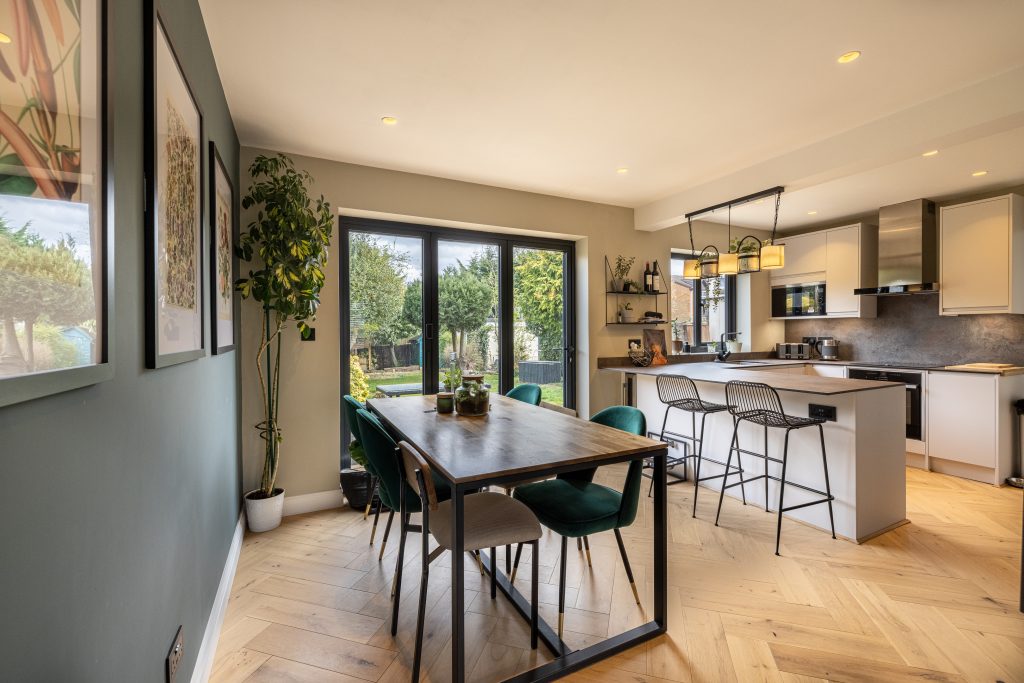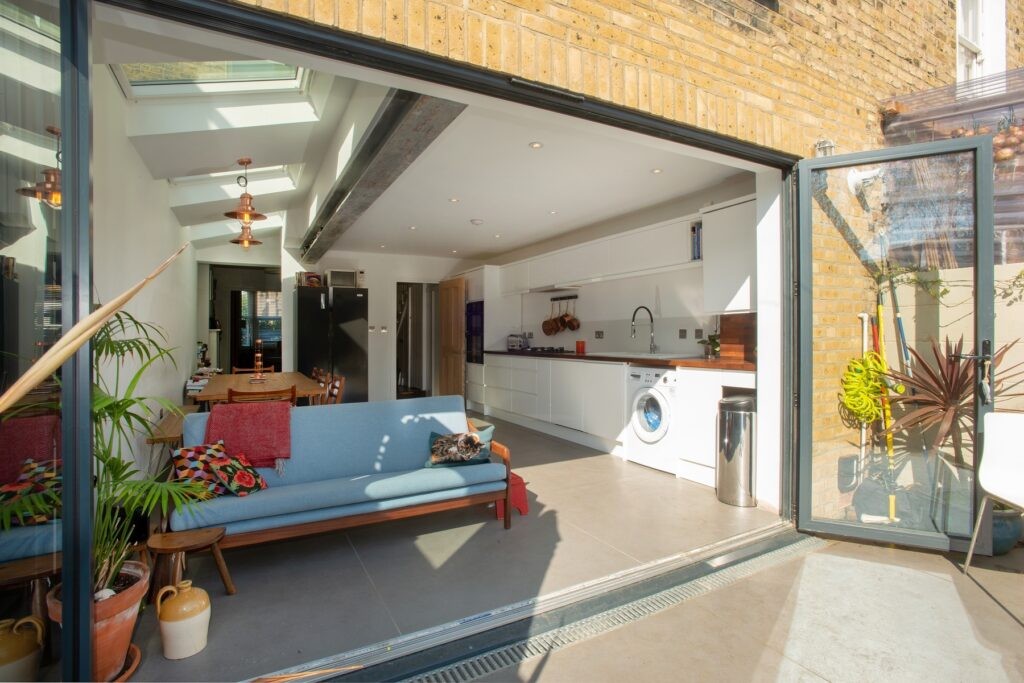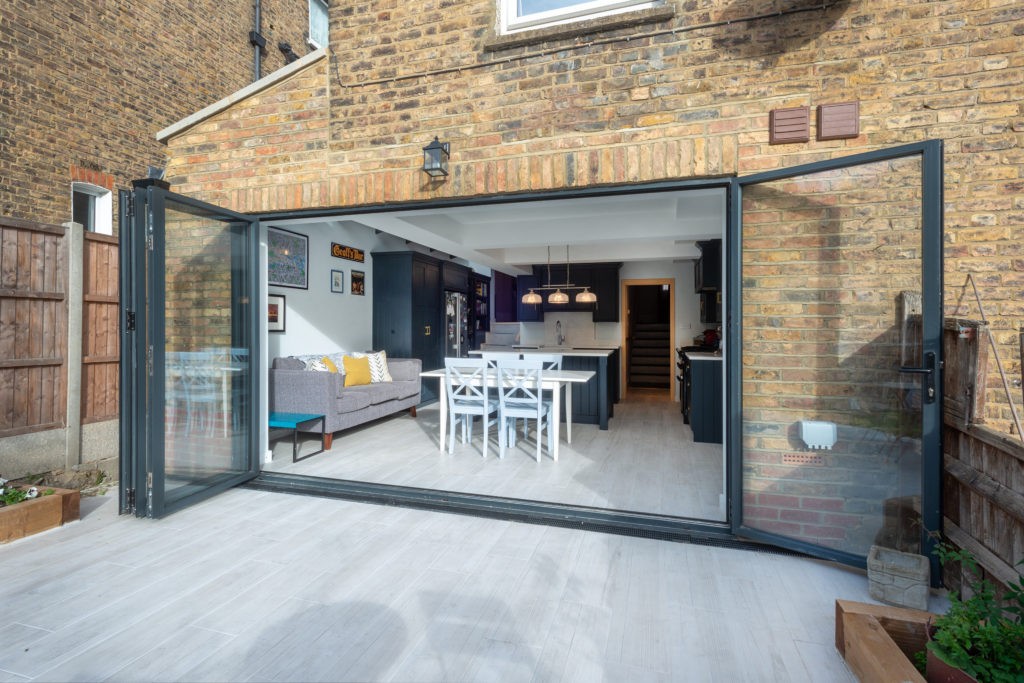Embarking on a home renovation project is an exciting venture that can transform your living space and enhance your lifestyle. However, preparation is essential before construction starts to ensure a smooth and successful project. From clearing the clutter to understanding utility connections and managing construction-related chaos, this comprehensive guide will walk you through the crucial steps to get your home renovation-ready.
A successful home renovation begins with thoughtful planning and meticulous organisation. Taking the time to prepare your home for the upcoming changes streamlines the construction process and lays the foundation for a stress-free and enjoyable renovation journey.

Clearing the Clutter
Clearing clutter is an essential step in preparing your home for an extension. It not only creates a clean and safe environment for construction but also allows you to reassess your belongings and make room for the new space. Begin by conducting a thorough assessment of each room in your home, paying particular attention to the areas affected by the extension. Identify items that are rarely used, damaged beyond repair, or no longer serve a purpose in your life. Decide what to keep, what to donate, and what to dispose of. Consider hosting a garage sale or donating to local charities. This not only helps you declutter but also benefits others in need.
As you clear clutter, you may find some items worth keeping but need better storage solutions. Invest in storage containers, shelves, and organisers to maximise space and keep your belongings neatly arranged. Ample storage will prove beneficial during the construction phase. If your extension project involves major renovations or additions to existing rooms, consider renting a storage unit for valuable or delicate items. This ensures they remain safe and undamaged during construction.
Clearing clutter is an essential initial step in preparing your home for an extension. Not only will it streamline the construction process, but it will also create a more organised and comfortable living environment during and after the project.

Creating a Temporary Living Plan
During the construction of your extension, certain parts of your home may be off-limits or under renovation, making it essential to create a temporary living plan to ensure your family’s comfort throughout the construction phase. Creating a temporary living plan and designating safe zones is crucial to minimise disruptions and stress for your family.
Work with your builder to designate safe zones within your home where construction activities won’t take place. Unaffected bedrooms, bathrooms, and living rooms are ideal for safe zones. Living through construction can be stressful, so create a relaxation zone where you and your family can unwind. Set up a cosy corner with comfortable seating, soft cushions, and blankets. Consider adding some potted plants or scented candles to create a calming atmosphere.
If your kitchen will be inaccessible during the extension, create a temporary kitchenette in a different area of your home. Use a spare room or garage, or even set up a makeshift kitchen in the living room with essential appliances. Stock up on disposable plates, cups, and cutlery to minimise dishwashing. Designate a temporary dining space if your regular dining area is under construction. Utilise the kitchen island, a folding table, or a section of the living room.
If the extension affects your home’s main bathroom, consider setting up temporary bathroom facilities. Renting a portable restroom can be a practical option, or you might arrange with neighbours for access to their bathrooms. Also, if you have young children or pets, ensure their safety during construction. Keep them away from the construction zone and set up a play area in a separate room or outdoors where they can remain occupied and secure.

Managing Vehicles & Deliveries
During a home extension project, the influx of vehicles, contractor vans, and material deliveries can create chaos for you and your neighbours. Proper preparation and communication are key to minimising disruptions and maintaining good relations with those living nearby.
Work with your contractor to designate parking areas for construction vehicles and contractor vans. Ideally, these spaces should be within your property or as close as possible to the construction site, minimising the impact on the neighbourhood.
Coordinate with your contractor to schedule material deliveries at convenient times. Avoid rush hours or other busy periods when traffic in the neighbourhood might already be heavy. This will help minimise congestion and disruptions.
Ensure there are clear pathways for construction vehicles and material deliveries to access your property without causing obstructions or inconvenience to neighbours. This includes removing any obstacles like parked cars or landscaping features that might hinder access.

Informing Neighbours in Advance
By proactively managing communication with your neighbours, you can minimise disturbances during the construction of your extension. Being considerate and respectful to those around you will foster a more harmonious construction process and build positive relationships with your neighbours. Let your neighbours know in advance about the upcoming home extension and the potential disruptions it may cause. Inform them of the expected start and end dates and any construction-related activities that might affect them, such as noisy equipment or increased traffic.
Collaborate with your contractor to set specific working hours for construction activities. Generally, it’s best to adhere to local noise regulations and limit noisy work to reasonable daytime hours to avoid disturbing neighbours. To minimise noise and dust transfer, create buffer zones between the construction site and neighbouring properties. Temporary barriers, like construction fences or hedges, can help maintain privacy and reduce the visual impact of the construction.
Regularly inspect the construction site to ensure it is kept clean and organised. Dispose of construction waste properly and address any spills or debris that might affect neighbouring properties. If any concerns or complaints arise from your neighbours during construction, address them promptly and courteously. Open communication and a willingness to resolve issues help maintain positive relationships within the community.
After completing the project, thank your neighbours for their patience and understanding during construction. Consider hosting a small gathering or sending thank-you notes to show your appreciation.

Understanding Utility Connections
Before starting the construction of your home extension, it’s crucial to thoroughly assess and understand its impact on your home’s utility connections. Modifying or extending utility lines, such as electricity, plumbing, and heating, requires careful planning and coordination with professionals.
Contact a licensed electrician to evaluate your home’s electrical system and determine if it can handle the additional electrical needs from the extension. The extension may require new electrical circuits, outlets, and wiring to power lighting, appliances, and other electrical devices. If needed, upgrading your electrical panel and service is essential to ensure safety and prevent overloading.
Consult a plumber and heating engineer to assess your current plumbing and heating system and understand how the extension will impact it. Additional plumbing lines will be necessary if your extension involves adding a bathroom, kitchen, or laundry room. A plumber can help you plan the new water supply, drainage systems and heating to connect seamlessly with the existing systems.
Coordinate with the respective utility companies for any major utility modifications, such as running new power lines or connecting to services. Obtain the necessary permits and approvals for the utility work and ensure it aligns with your extension project timeline.
Utility upgrades can be a significant cost in your extension project. When setting your budget, factor in the expenses for electrical, plumbing, and heating modifications. Get multiple quotes from reputable professionals to ensure you get the best value for the required services.
An extension provides an excellent opportunity to enhance your home’s energy efficiency. Consider installing energy-efficient lighting, appliances, and fixtures. Additionally, discuss with professionals how to improve insulation and weatherproofing to reduce energy consumption and utility bills.

































